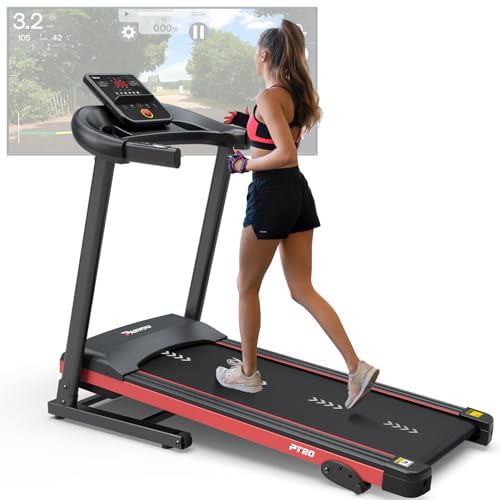The Benefits of Using Treadmill Incline: Elevate Your Workout
When it pertains to optimizing workout efficiency, lots of physical fitness lovers typically ignore one reliable yet basic tool: the incline feature on a treadmill. Whether you're a skilled runner or a beginner looking for an efficient way to improve cardiovascular fitness, including incline into your treadmill regimens can substantially improve your exercise experience. This short article checks out the value of treadmill incline, its advantages, usage tips, and responses to often asked questions.
What is Treadmill Incline?
Treadmill incline refers to the angle at which a treadmill's running surface is elevated. The majority of modern treadmills featured adjustable inclines that permit users to replicate walking or running uphill. The incline can normally be set anywhere from 0% (flat) to as steep as 15% or more, depending on the design. This function can supply users with a more challenging workout that imitates outdoor terrain conditions.
Advantages of Using Treadmill Incline
Using treadmill incline provides a myriad of advantages for individuals intending to boost their fitness levels. Some of the crucial advantages include:
1. Increased Caloric Burn
One of the most significant benefits of integrating incline exercises is the potential for increased calorie expense. When you walk, jog, or work on an incline, your body works harder to get rid of gravity. This results in a greater metabolic rate and, thus, higher calorie burn compared to exercising on a flat surface.
- Studies recommend incline training can burn up to 50% more calories than an exercise on a flat treadmill.
2. Improved Muscle Engagement
Incline exercises engage various muscle groups compared to flat running. Specifically, they target:
- Calves
- Hamstrings
- Glutes
- Quads
This boosted engagement can lead to enhanced muscle tone and strength over time, adding to better general physical fitness.
3. Lowered Impact on Joints
For those with joint issues or those recuperating from injury, working on an incline can be gentler compared to operating on flat surfaces. The incline moves some of the impact far from the knees and lower back, using a more flexible running surface.
Tips for Reduced Impact:
- Start with a mild incline (1-3%) before gradually increasing.
- Utilize an appropriate warm-up to prepare the joints.
4. Enhanced Cardiovascular Fitness
Incline workouts tend to raise heart rates more than flat treadmill exercises. Treadmill Foldable With Incline can lead to enhancements in cardiovascular health over time.
- High-intensity interval training (HIIT) with incline can be especially effective for increasing cardiovascular strength.
5. Simulating Outdoor Environments
Incline training enables treadmill users to replicate the conditions of outdoor surfaces, assisting to prepare for roadway races or path running. This can boost endurance and flexibility to different running conditions.
How to Use Treadmill Incline Effectively
To maximize the advantages of treadmill incline exercises, consider the following standards:
- Warm-Up:Begin with a gradual warm-up on a flat surface area for 5-10 minutes to prepare your muscles.
- Start Low:If you're new to incline training, begin with a 1-3% incline. As you acquire strength and confidence, gradually increase the incline for more difficulty.
Integrate Intervals:To elevate workout strength, alternate in between periods of flat running and higher incline intervals.
- Example Routine:
- 5 minutes flat (0%)
- 3 minutes incline (5-10%)
- 5 minutes flat (0%)
- Repeat the cycle.
- Correct Form:Maintain great posture by standing high, engaging your core, and not leaning excessively into the incline.
- Cooldown:Always conclude your workout with a cooldown period on a flat treadmill to permit your heart rate to slowly go back to typical.
FAQs about Treadmill Incline
1. Is an incline of 15% too high for novices?
While 15% can be challenging, beginners should start at a lower incline (1-3%) and gradually increase as they become more comfortable and establish strength.
2. How often should I incorporate incline workouts?
For best results, consider integrating incline exercises into your routine 1-3 times each week, depending upon your general fitness goals and levels.
3. Can using incline help with weight-loss?
Yes, incline workouts can significantly boost your calorie burn, making weight loss more achievable when coupled with correct nutrition.
4. Should I utilize incline workouts whenever I stroll or run?
While incline exercises are advantageous, alternating in between flat and inclined sessions can help avoid overuse injuries and keep workouts varied.
5. Is it safe to work on an incline for extended periods?
Generally, yes, however it is important to listen to your body. If you start to feel pain or discomfort, lower the incline or offer your body a rest.
Integrating treadmill incline is an uncomplicated yet reliable way to raise fitness regimens. It offers many advantages, from increased caloric burn and muscle engagement to enhanced cardiovascular health. By implementing the suggestions described above, people can enjoy a more diversified exercise regimen that meets their physical fitness goals and boosts their overall well-being. Whether aiming for weight loss, muscle toning, or endurance building, the incline function on treadmills can pave the way to a more reliable physical fitness journey.

